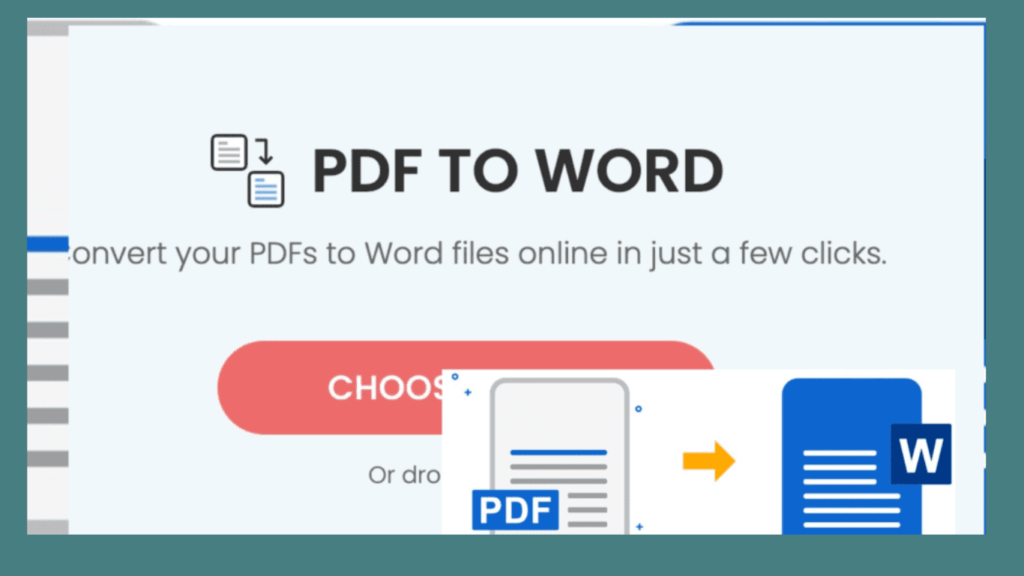
Artificial intelligence is engaging its audience by giving such valuable tools to people. One is the AI Audio editors, which streamline audio file editing and manipulation.
These innovative tools effortlessly transcribe, synthesize voices, and efficiently eliminate noise, offering remarkable time and energy savings.
Let’s explore the Magic of AI of audio editors as we tell you features and some must-try AI audio editors for 2023. Read till the end.
Table of Contents
What Is An Ai Audio Editor?
An AI audio editor is valuable for tasks like podcasting, audiobook creation, and radio show production. While not as flashy as video editing, its importance is undeniable. These editors skillfully edit, arrange, and enhance audio clips automatically at their fingertips, saving time and money.
Ai Audio Editor is convenient for transcription, voice replication, and more. So, whether you’re a content creator or working on narration-focused projects, AI audio editors simplify the process and offer versatile functions beyond just regular editing.
What Are The Features Of AI Audio Editor?
AI audio editing software offers a wide range of advanced features to the users listed below:
- These tools intelligently improve audio quality by eliminating background noise, reducing reverb, enhancing speech clarity, boosting low volumes, and more.
- They effortlessly identify and correct pitch inconsistencies in recorded vocals or instruments, saving significant time in manual tuning.
- Engineers can use AI audio editing software to compress a track’s dynamic range while preserving its sonic characteristics, ensuring balanced audio levels without distortion.
- Ai Audio Editors swiftly align tracks and segment them into clips, simplifying arrangement in post-production mixing.
- These tools analyze multiple audio tracks and produce a refined mix with customized EQ, compression, panning effects, and more while allowing user modifications.
- AI analyzes mix elements like dynamic range, spectral balance, and stereo width for optimized sound, saving engineers time and effort.
- Audio editor gives you features like vocal removal from audio, leaving other elements unaffected, making it possible to create instrumentals or focus on individual mix components.
Here Are Some Best AI Audio Editors For You
1. Auphonic
Auphonic is an AI audio editor designed for hassle-free professional results. With features like noise filtering, level normalization, and audio restoration, it’s perfect for podcasts, movies, and more.
It even includes speech recognition and video editing capabilities. While the free plan offers limited processing (up to 2 hours of audio monthly), Auphonic excels primarily as an audio tool.
Advantages:
- Smart leveling capability.
- Speech recognition feature.
- Accessible on both desktop and mobile platforms.
Disadvantages:
- Limited to two hours of free processing per month.
- Mandatory registration, even for the free plan.
- Room for improvement in the user interface.
Price: Starting at $11/mo
Link: try now
2. Descript
Descript is a versatile video and audio editing software beyond traditional editing. It offers features like dubbing, transcription, screen recording, and voice synthesis through Overdub. It’s well suited for podcast editing and quality transcription.
However, its basic audio editing functions might disappoint advanced users, and occasional performance issues can arise. The free version has limitations, requiring an upgrade for advanced features.
Advantages:
- It Boasts podcast editing capabilities.
- Provides high-quality transcription services.
- Offers voice synthesis functionality.
Disadvantages:
- It functions as a relatively straightforward conventional audio editor.
- Encounters occasional performance glitches.
- The free version exhibits constraints in multiple aspects.
Price: Starting at $12/mo
Link: try now
3. Trint
Trint excels in professional transcriptions for both audio and video content, catering to large companies. It lacks extensive editing features and offers a limited free trial.
It’s efficient and favored by big enterprises like Nike and The Washington Post, but its focus is primarily on transcription, making it less suitable for editing.
Advantages:
- Delivers professional-grade transcriptions.
- Demonstrates speed and effectiveness.
- Particularly suitable for larger corporations.
Disadvantages:
- Offers limited audio editing attributes.
- Presents a restricted free trial period.
- Comes with a higher price tag.
Price: Starts at €44/mo
Link: try now
Read Also: These are Best AI Tools For Content Creators In 2023
4. Podcastle
Podcastle is tailored for podcast creators, offering features like remote interviews, voice synthesis, transcription, and text-to-podcast conversion. It’s an excellent choice for podcast enthusiasts but may have limitations in some plans.
The Chrome extension for text-to-podcast conversion might only meet some expectations, and it’s recommended mainly for those interested in podcasts.
Advantages:
- Offers a generous free plan.
- Provides a text-to-podcast feature.
- Recognized as the top choice for podcast producers.
Disadvantages:
- Specific plans have overly restrictive limitations.
- The browser extension’s performance falls short of high expectations.
- Not a suitable recommendation for individuals uninterested in podcasts.
Price: Starting at $11.99/mo
Link: try now
5. Krisp
Krisp is a noise cancellation tool focusing on online meetings and communication. Its ease of use and fair pricing make it efficient for removing background noise, although it lacks additional features beyond noise cancellation.
Some occasional distortions may occur, and certain features are limited to Mac users.
Advantages:
- It has an easy-to-use interface.
- Transparent pricing structure.
- High level of effectiveness.
Disadvantages:
- Limited additional features beyond noise cancellation
- Occasional distortion caused by the app.
- Audio recording and virtual backgrounds are exclusively accessible on the Mac platform.
Price: Starting at $5/mo
Link: try now
6. SimonSays
SimonSays offers versatile online audio editing, transcription, and more. It supports over 100 languages and integrates with various editing software.
However, its online-only nature can be unreliable and slow for file uploads. While it’s easy to use, its cost and limitations may need to be revised.
Advantages:
- Accessible without the need for downloads.
- Offers integration with various software.
Disadvantages:
- Prone to unreliability due to its reliance on online connectivity.
- Exhibits slow file upload speeds.
- Comes at a relatively high cost.
Price: Starting at $20/mo
Link: try now
7. Resemble
Resemble excels in voice synthesis, supporting multiple languages and offering a Unity plugin. It’s favored for dubbing and fantasy voices.
However, its user interface could be improved, and its pricing may only suit some. The free trial is limited.
Advantages:
- Offers support for six distinct languages.
- Includes a Unity plugin for added convenience to developers.
- Appeals to developers due to its user-friendly nature.
Disadvantages:
- The user interface has room for improvement.
- Comes with a relatively high cost.
- Provides a quite restricted free trial option.
Price: Starting at $30/mo
Link: try now
8. Murf
Murf offers innovative voice editing, converting audio files into editable text. It’s fast and easy to use but limited by its online-only functionality and plan restrictions. The free version is also constrained by audio duration.
Advantages:
- The interface is straightforward to use.
- Swift processing speed.
- Cutting-edge editing features.
Disadvantages:
- Prone to unreliability as it relies on online connectivity
- Specific subscription plans entail impractical restrictions
- Offers a restricted free trial period
Price: Starting at $13/mo
Link: try now
9. Cleanvoice
Cleanvoice removes filler sounds and mouth noises from recordings, supporting multiple languages. It’s not real-time and works best for eliminating specific unwanted sounds.
File format and size limitations exist, and occasional technical issues might arise.
Advantages:
- Extremely user-friendly.
- Offers support for multiple languages.
- Transparent and reasonable pricing.
Disadvantages:
- It is limited to handling .wav and .mp3 file formats exclusively.
- Maximum recording size capped at 1GB.
- Infrequent technical glitches may arise.
Price: Starting at €10/mo
Link: try now
10. ClipChamp
ClipChamp’s voiceover generator offers numerous voice and language support. However, it’s better suited for video editing than advanced audio editing.
The free plan has watermark restrictions, and Full HD exports require the Business plan.
Advantages:
- Offers 170 distinct voices for various applications
- Provides support for 70 different languages
- Offers a user-friendly experience
Disadvantages:
- Excels more in video editing capabilities than audio editing.
- Watermarks are present on exports in the free plan.
- Access to Full HD exports necessitates the purchase of the Business plan.
Price: Starting at $9/mo
Link: try now
Read Also: Best AI Voice Generators
What Are The Benefits Of AI Audio Editing Software?
Here are the Benefits of AI audio editing software are as follows:
1. Enhanced Precision: AI tools excel at pinpointing sound components like background noise and effectively eliminating them from audio files. Such accuracy is a time-consuming challenge for human editors.
2. Heightened Efficiency: AI audio software swiftly processes and edits extensive data, drastically reducing editing durations and boosting productivity.
3. Cost Efficiency: Implementing AI audio editing software cuts labor expenses, as it substitutes the need for manual editors while maintaining top-tier quality in significantly less time.
4. Automation Advantage: Repetitive tasks are automated by AI tools, sparing editors from monotonous manual work. This grants them more opportunities for refined creative endeavors.
5. Amplified Creative Scope: With automation streamlining tasks, editors can devote more time to exploring novel concepts rather than mundane duties like EQ adjustments or normalization. This increased creative freedom fosters quicker innovation in project completion.
Conclusion
This Article helps you with brief info about the Ai Audio Editor. While some audio editors may outshine others, we suggest trying several to identify the one that best suits your requirements. We regularly post tech-related articles to help you with regular tech updates. Please share it with your friends also and give us your support.
Frequently Asked Questions
Q. What factors should I consider when selecting an AI audio editor?
Ans: When choosing an AI audio editor, always compare costs, features, user interface, and customer support to find the right fit.
Q. How can I make my voice sound like AI?
Ans: You can achieve this by adding effects to your voice recording, using a voice changer app, or using an AI-based voice synthesizer.
Q. Where can I edit audio online for free?
Ans: There are free tools and apps available, but they often have limitations on editing time or include ads.






